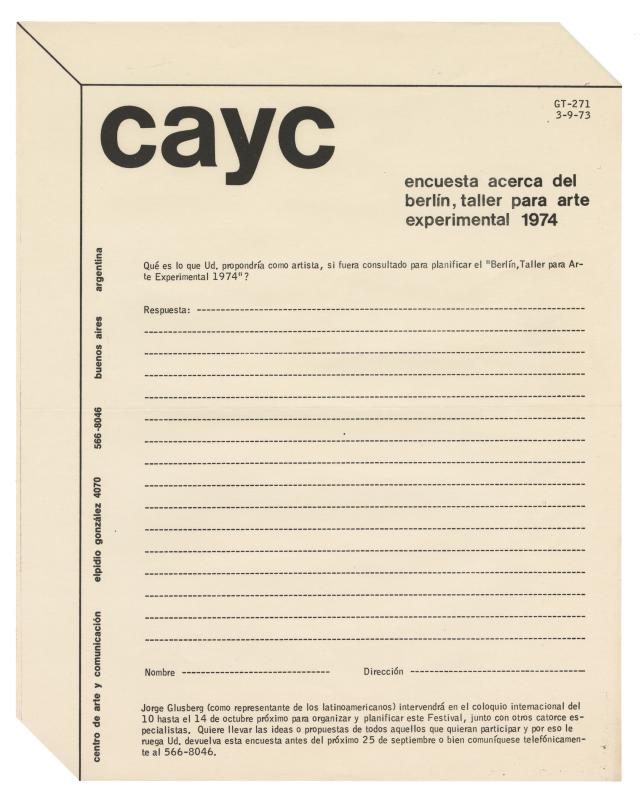Ever since it was founded, the CAYC (Centro de Arte y Comunicación), helmed by the cultural promoter, artist, and businessman Jorge Glusberg, was intended as an interdisciplinary space where an experimental art movement could flourish. The establishment of collaborative networks connecting local and international artists and critics played an important role in this process. The exhibitions shone a light on these exchanges, in which overviews of trends or individual artists provided an introduction to the innovations of international contemporary art and made Argentine and Latin American artists better known on the global scene.
In September 1973 the CAYC issued an invitation (GT-271; doc. no. 1478196) to artists and other actors in the international art world to submit their proposals for Berlin, Taller de arte experimental 1974 (Berlin Workshop for Experimental Art 1974). Twenty-five prominent figures in the field of international contemporary art took part in the event, including Joseph Beuys, René Block, Marcel Broodthaers, Daniel Buren, James Lee Byars, Richard Hamilton, the critics Ichiro Haryu, Achille Bonito Oliva, and Germano Celant, and Glusberg, who was the sole representative of South American countries. The participants also signed a document (GT-310; doc. no. 1479015) condemning the human rights violations perpetrated by the recent military coup in Chile, which became worse during the subsequent seventeen-year dictatorship. First World governments were aware of the CIA’s involvement in the coup. The participants also issued a warning about the danger posed by creeping fascism in Latin America.
The coup d’état by the Chilean Armed Forces on September 11, 1973, deposed the President Elect Salvador Allende and installed a de facto government in the form of a military junta led by General Augusto Pinochet.

